MARIANI’S
Virtual
Gourmet
December
30, 2018
NEWSLETTER

IN THIS ISSUE
LAS VEGAS EATS, Part Two
By John A. Curtas
NEW YORK CORNER
10 CORSO COMO
By John Mariani
NOTES FROM THE WINE CELLAR
FAVORITE WINES OF THE YEAR
By John Mariani
❖❖❖
LAS VEGAS EATS
Part Two
By John A. Curtas
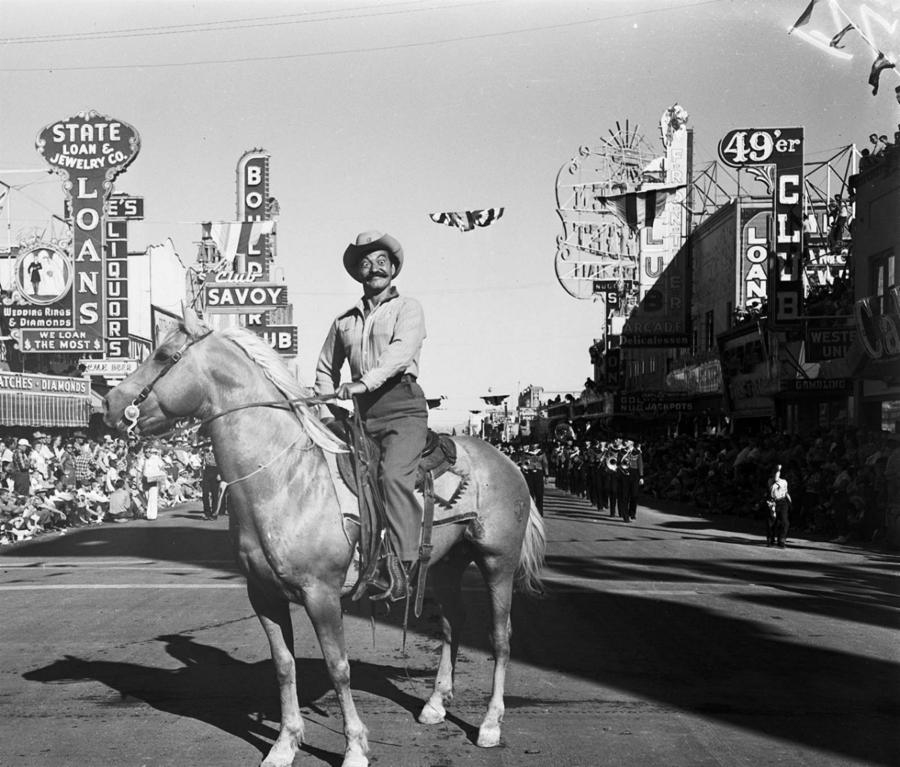
Jerry Colonna circa 1957
Spring
Mountain Road— what the locals call
Chinatown—has been a hotbed of Asian eats since
1995, continuing to draw fans
of everything from Korean barbecue to sushi to pho parlors. But in the past year,
two decidedly non-Asian places
have taken the neighborhood by storm, and, like
Commodore Perry sailing into
Tokyo Bay, the westerners have arrived and
they're not going away.
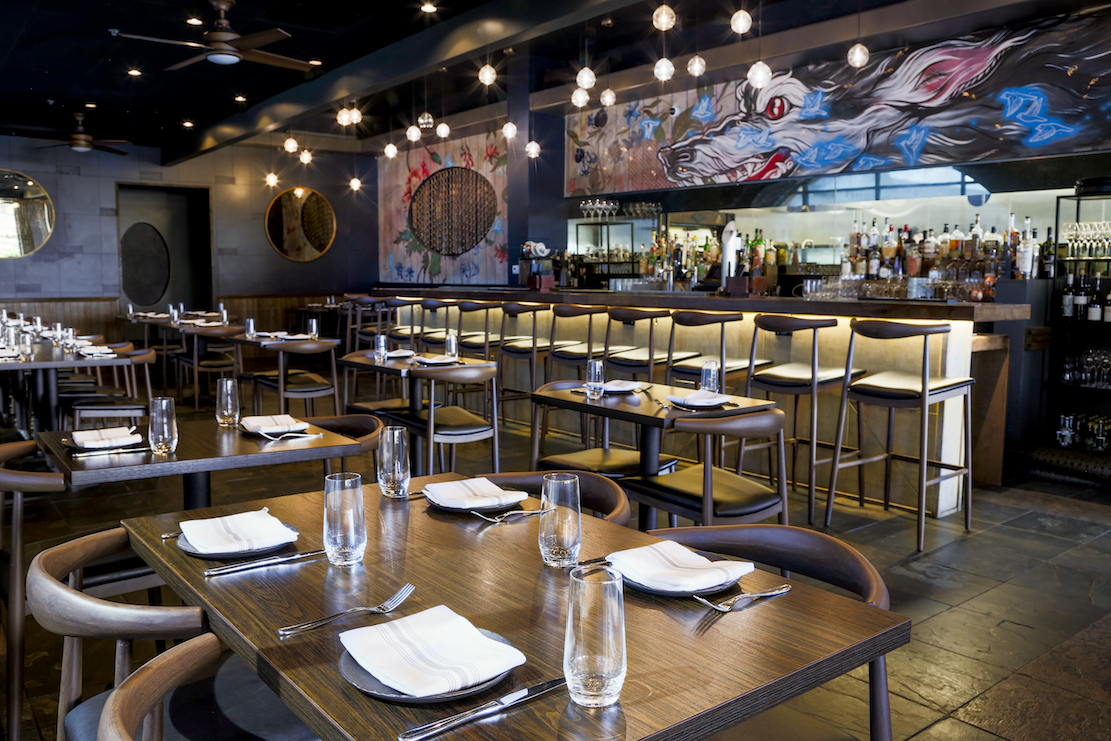 SPARROW
+ WOLF
SPARROW
+ WOLF
4480
Spring Mountain Road
702-790-2147
Photos by Sabin Orr
Chef/owner
Brian Howard's Sparrow + Wolf began
the transformation last year when he opened his
woodsy-scented, cozy gastropub
to great acclaim in the vacated space of an old
Vietnamese restaurant. His
menu, like the community in which he is located,
is all over the map, with more
than a nod to his pan-Pacific surroundings. It
begins with a house-made
charcuterie platter with seasonal pickles and from
there directs you to oysters
topped three ways—with pineapple mignonette, a
cucumber granité and a gelatinized
yuzu
pearl. These accents change
seasonally but never fail to hit the spot. 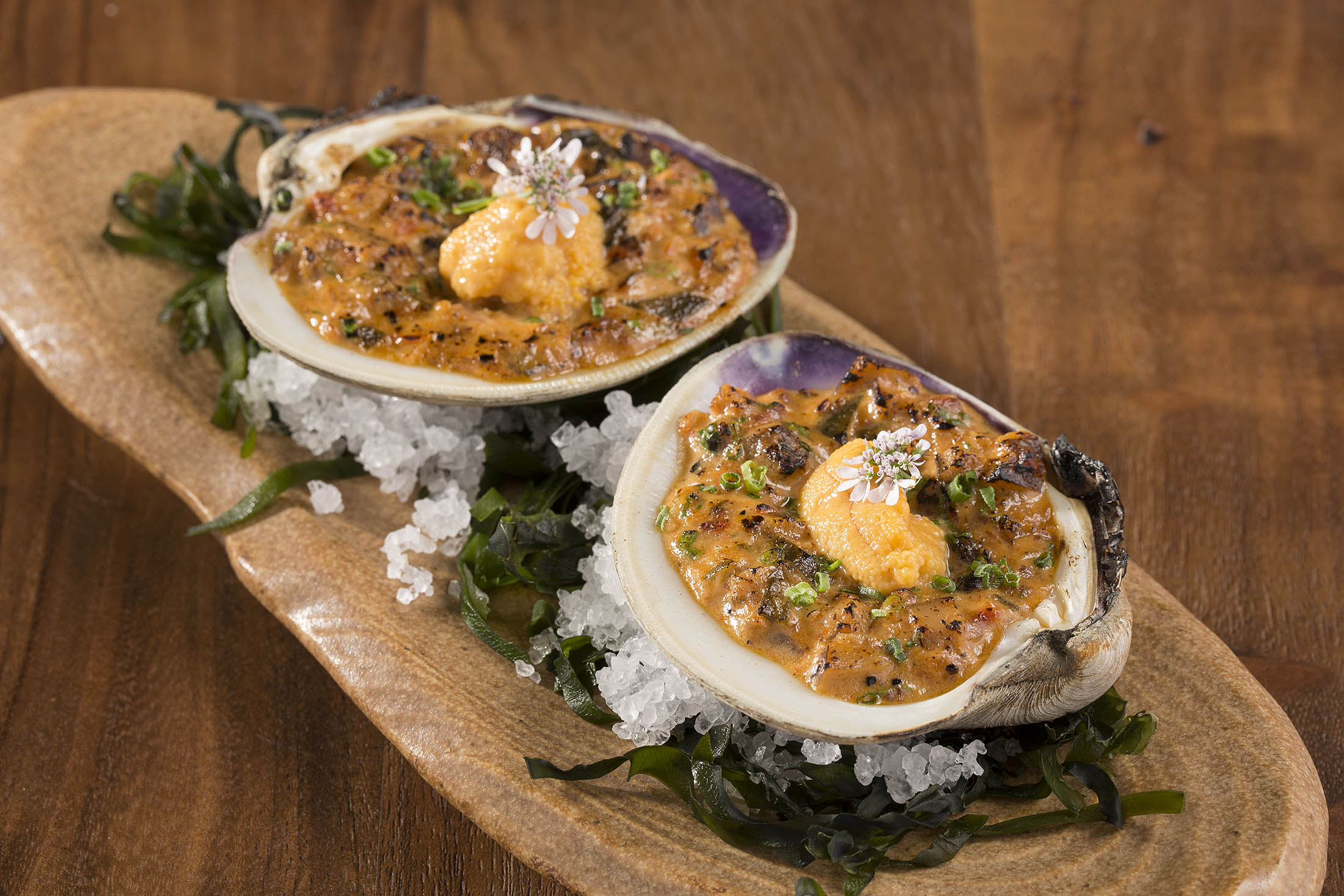
Howard references Chinatown
with his clams
casino (right), baked
with an uni hollandaise. Roasted beets come under
a tangle
of endive, pea shoots, shaved fennel, sheep’s milk
blue cheese and “bird seed”
(black sesame seeds), while “Butcher Wings” come
coated with a burnt-tomato ‘nduja
vinaigrette. Chinese-style dumplings are stuffed
with beef cheek meat and
bone-marrow, and, just to show he’s at home in
many arenas, Howard bathes a chunky
filet of toothsome halibut with Alabama white
barbecue sauce.
Nowhere is this
complicated cooking more
rewarding than in his Campfire Duck, gorgeous
slices of duck and foie gras
resting on dark earthy shreds of wood-ear
mushrooms, accented by sharp bites of
salted plum in a duck-bone broth. It appears at
first to be trying to do too
much, but the flavor explosions in your mouth are
a sign that a neighborhood
culinary revolution is in the process.
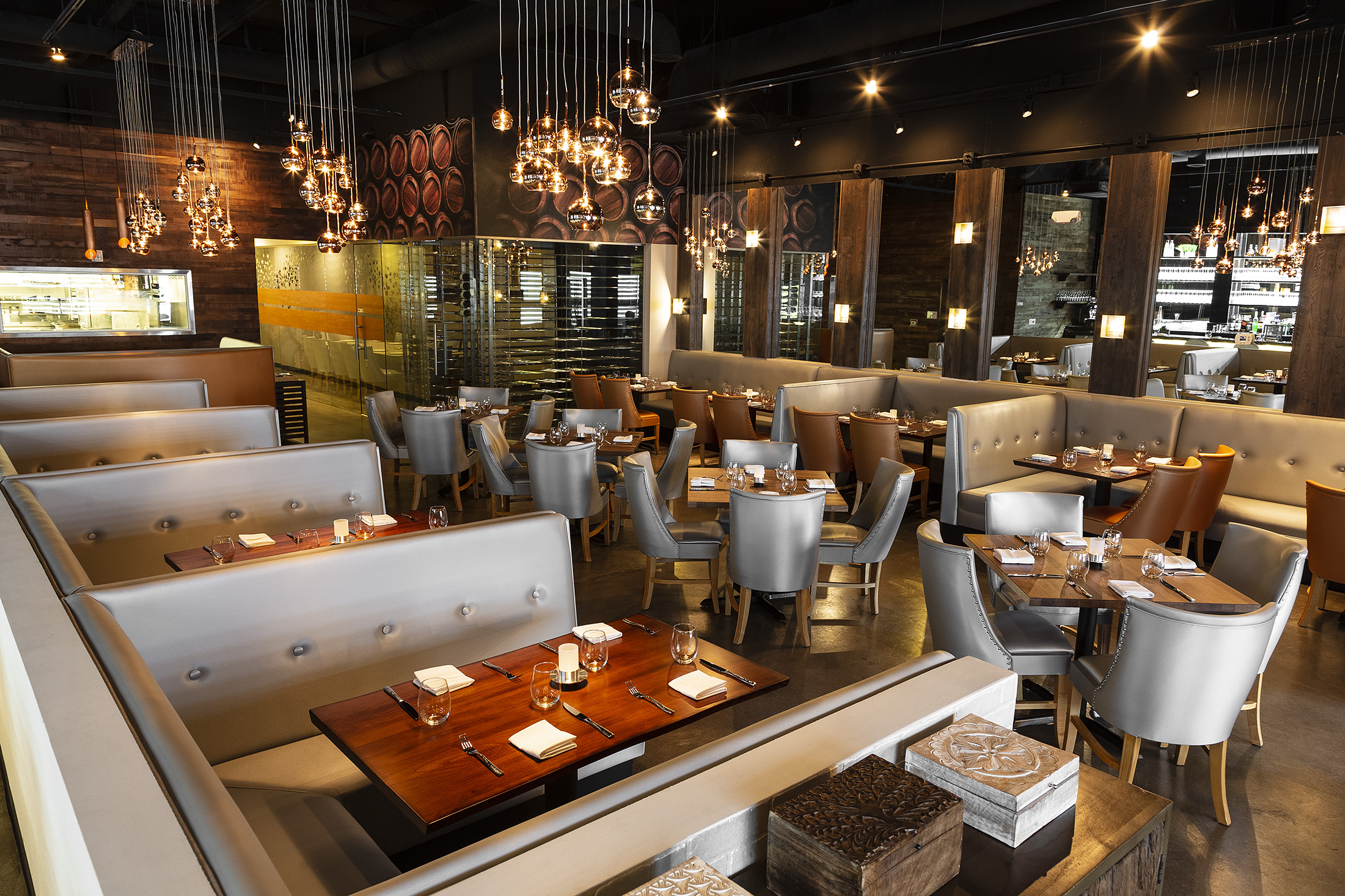
PARTAGE
3839
Spring
Mountain Road
702-582-5852
A
mile down the road lies Partage, a haute bistro
unlike any Chinatown
(or Las Vegas)
has ever seen. When chefs Yuri Szarzewski, Vincent
Pellerin and manager Nicolas
Kalpokdjian (below)
came to the United States in 2015, they had a
dream. They wanted
to bring healthy French food to Las Vegas. And
they did, first with their
casual EATT Gourmet Bistro a few miles away, and
now with a more upscale (but
still very laid back) place in a shopping center
more at home with nail salons
and noodle shops than croque
monsieurs
and cru
Beaujolais.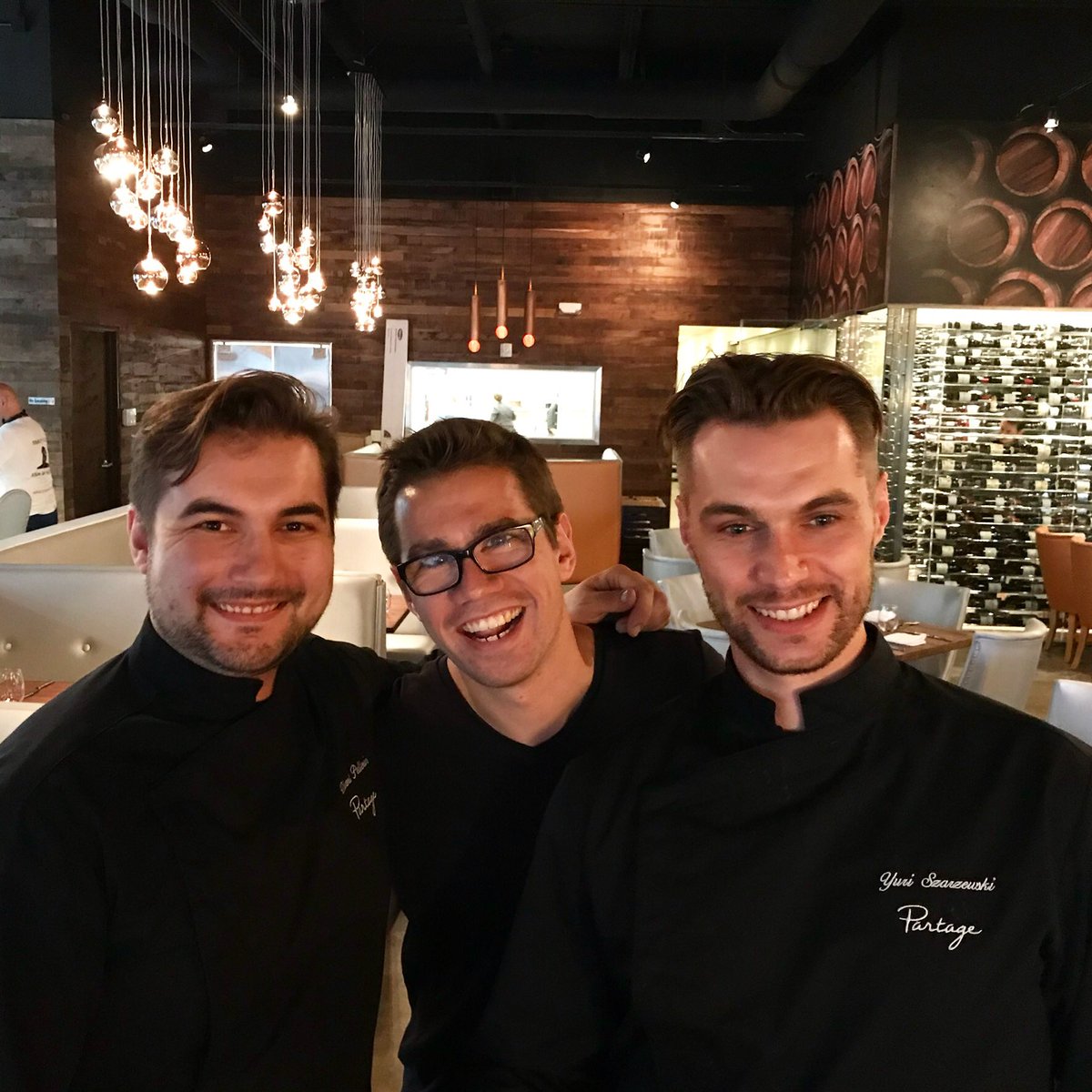
Partage means “sharing” and the
menu encourages
you to do just that. Twenty small-plate options
are offered, each amounting to
no more than two to three bites of headliners like
halibut ceviche (disguised
to look like dragon fruit), or a perfect meaty
scallop swimming in a dashi
broth with seaweed chutney and steamed leeks.
As good as those are, the real
stars of the
show are the crispy salmon croquettes, and the
squid “risotto”—the risotto in
this case being finely diced squid bound together
by a barely there pesto—a
dish filled with flavor that doesn't fill you up.
If it’s richness you’re
after, 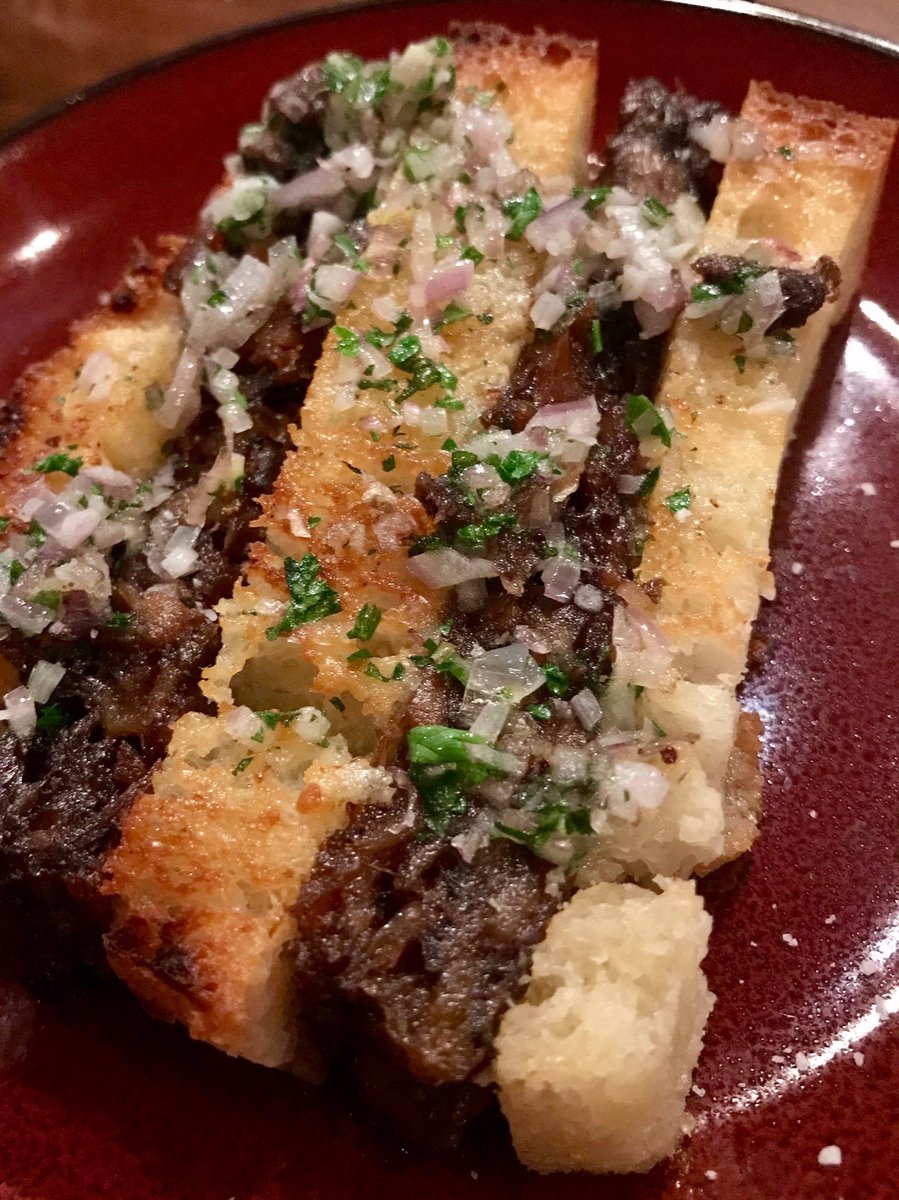 Szarzewski has you
covered. His sweetbreads are a godsend for lovers
of
those morsels of thymus, accented by lotus root
and a smooth tonka bean cream.
Szarzewski has you
covered. His sweetbreads are a godsend for lovers
of
those morsels of thymus, accented by lotus root
and a smooth tonka bean cream.
But for pure
decadence, nothing beats his oxtail croque
monsieur (left):
long-simmered meat,
slicked with bone marrow, served between three
batons of the world’s most
luxurious toast. Large format fans can tuck into
big cuts of 18-ounce rib eye
or a 32-ounce tomahawk steak—smoked with either
hickory, applewood, or hay
(your choice!).
In keeping with the “healthy
French” theme,
sauces are kept to a minimum. Not to my taste,
exactly—the roast whole duck,
Duroc pork, and sea bass en croûte
suffered from a lack of liquids, but the
presentations are in keeping with how
modern French food is evolving these days.
For dessert, Pellerin’s rolling
cart is not to
be missed. Whether he’s doing a baba au rhum
(injected at table with the
high-proof spirit), profiteroles, or a flaming
baked Alaska, every one of his
classics is hand-tooled and as tasty as anything
on the Strip. Pastry chefs are
an endangered species these days and it’s great to
have a local one working his
sweet magic in two restaurants every night.
ESTHER’S
KITCHEN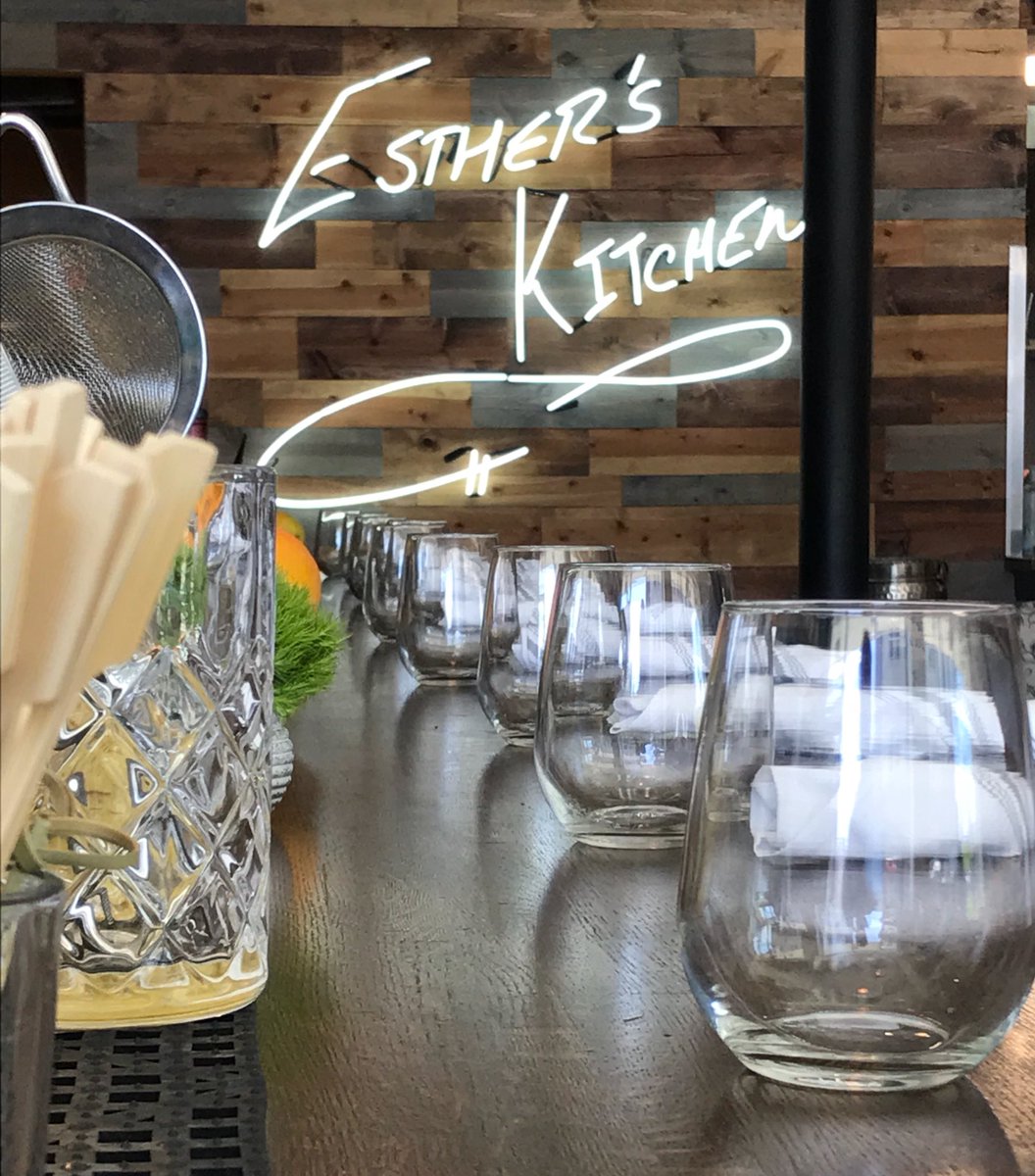
1130
S. Casino Center Boulevard
702-570-7864
Spring Mountain
Road may be having a
cross-cultural awakening, but downtown Las Vegas
has been undergoing a
renaissance of its own for half a decade. Ground
zero these days is the Arts
District—several square blocks studded with bars,
antique stores and suddenly
an infusion of really good food. Leading the pack
is Esther's Kitchen—open less
than a year and now so popular an empty seat is
harder to find than a Mario
Batali fan. What began with Carson Kitchen four
years ago, took a giant leap
forward in early 2018 when chef/owner 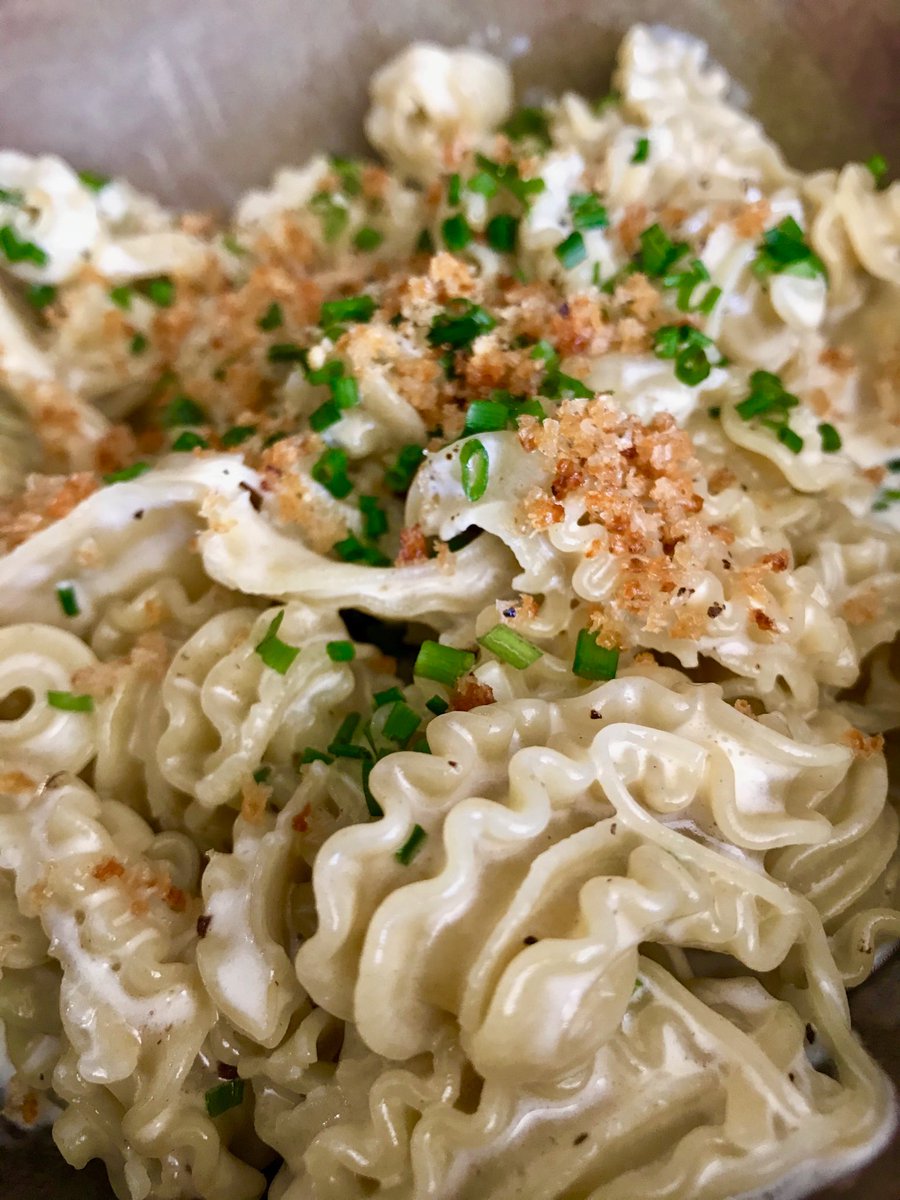 James Trees opened this
80-seat space
just off Main Street. Instead of joining the
overdone American gastropub craze,
Trees goes full Italian, bombarding you with
antipasti, verdure,
pastas, and
pizzas straight from a Roman’s playbook. He even
throws in a fish of the day
(always worth it), brick chicken (a crowd
favorite), and slabs of porchetta.
James Trees opened this
80-seat space
just off Main Street. Instead of joining the
overdone American gastropub craze,
Trees goes full Italian, bombarding you with
antipasti, verdure,
pastas, and
pizzas straight from a Roman’s playbook. He even
throws in a fish of the day
(always worth it), brick chicken (a crowd
favorite), and slabs of porchetta.
As
a veteran of
the Los Angeles restaurant scene, Trees knows how
to grab a diner’s attention.
His spaghetti pomodoro, chitarra cacio e pepe (with
pecorino cheese and black
pepper), bucatini
all’amatriciana, and rigatoni carbonara
are handmade and
portioned to elicit ohs and ahs for their
perfection of pasta porn. My
favorite, though, is his radiatore with black garlic,
lemon, and cream (left)—a
palate-coating belly bomb of the best kind.
Pizzas are far from
standard issue either, with beautiful charred
cornicione, good cheese and
always a surprise or two in the topping
department, like salty bacon with
caramelized onions or Greek sausage and fennel.
All of it amounts to
American-Italian comfort food for the 21st
century. It may not be like any
Roman trattoria I’ve ever been in, but, with a
significant cocktail program,
amazing amaros,
and a wine list where
everything is $40 (by the bottle, not glass), it
is a modern American version
that seeks to do the same thing: feed its
customers in a way that will have
them returning again and again.
PIZZERIA
MONZÚ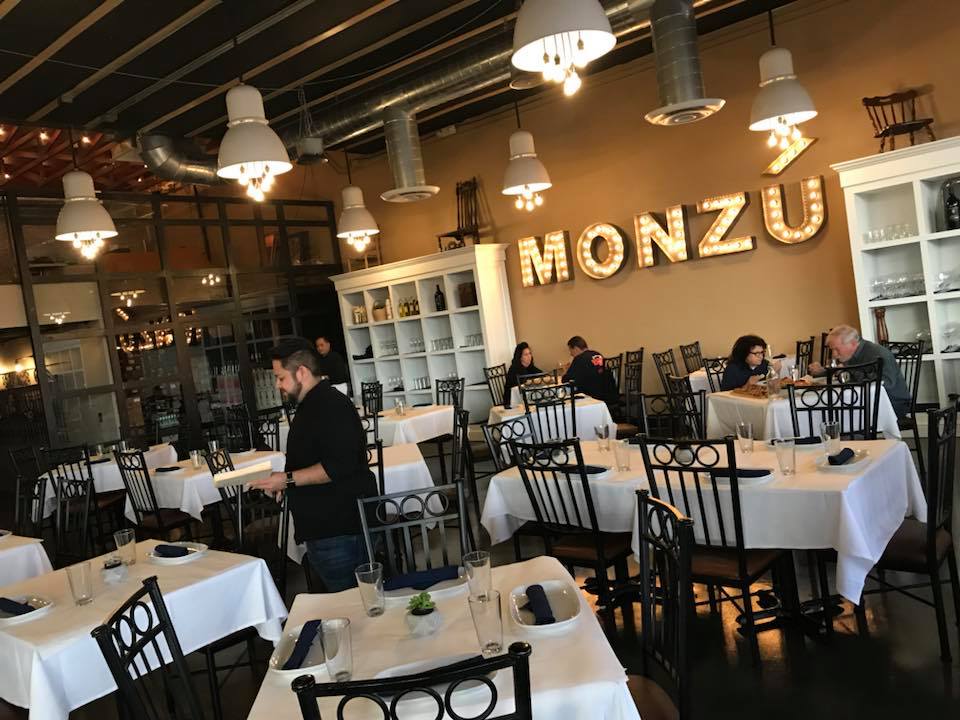
6020
West Flamingo Road
702-749-5959
Las
Vegas
upped its pizza game considerably over the past
decade, but it wasn’t
until Pizzeria Monzú opened this year that it had
a true Sicilian superstar.
Local restaurant scion Giò Mauro (of Nora’s family
fame) took over the old Nora’s,
and what was once old-school Italian-American now
reeks of wood smoke, craft
cocktails, and foodie cred. The room is big,
bright, and airy; the tables are
comfortable and well-spaced. High ceilings keep
the noise level down to
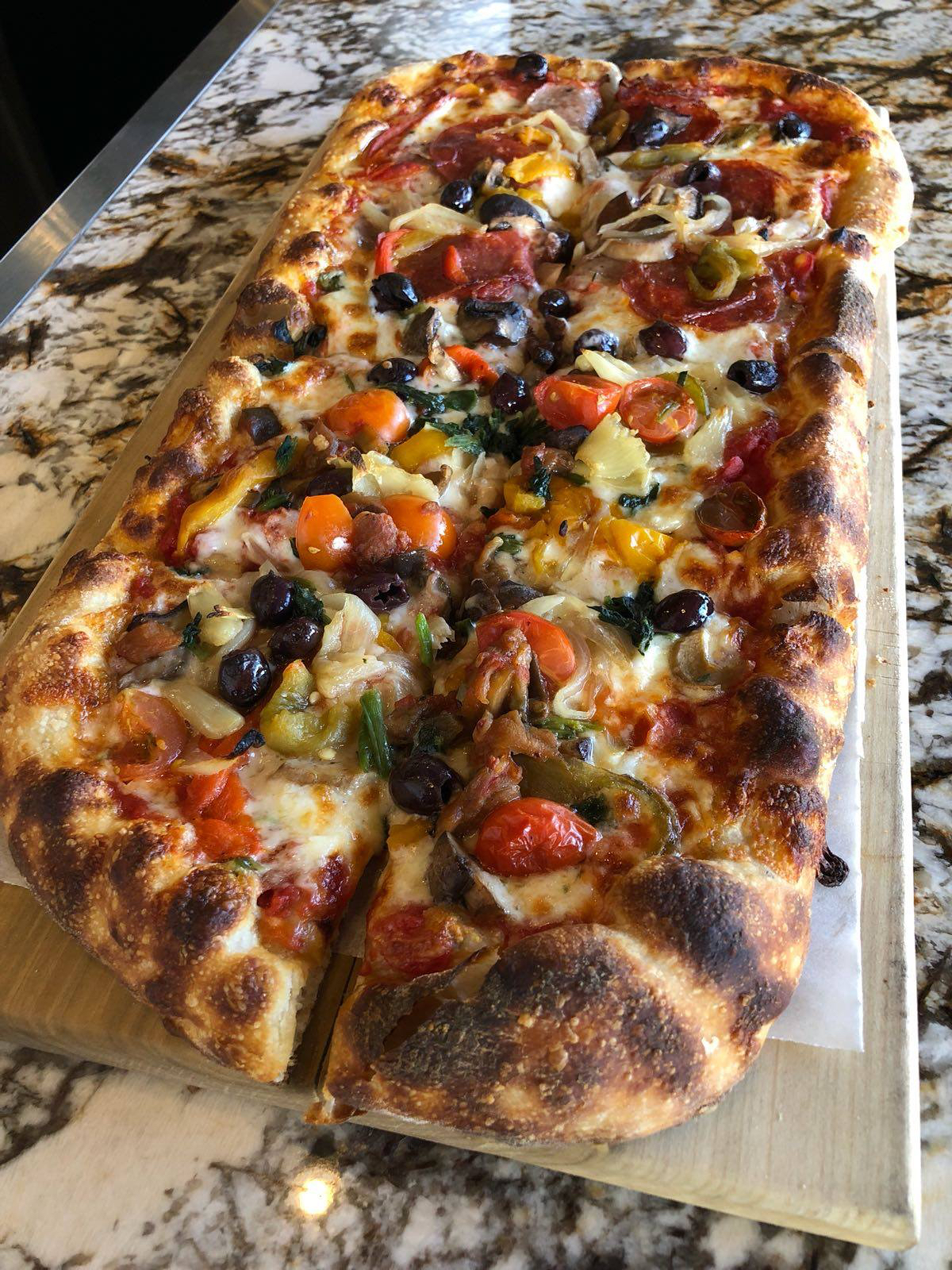 conversational levels
and a small stage off to one side gives you a hint
that
live (and very good) entertainment will be in the
offing. Those wanting upscale
spritzers and gorgeous (all-Italian) wines by the
glass won’t be disappointed,
either. It might be the best short wine list in
all of Vegas.
conversational levels
and a small stage off to one side gives you a hint
that
live (and very good) entertainment will be in the
offing. Those wanting upscale
spritzers and gorgeous (all-Italian) wines by the
glass won’t be disappointed,
either. It might be the best short wine list in
all of Vegas.
Once
you’re seated,
you'll want to get the appetizers, all of them:
squash blossoms stuffed with
ricotta and mint, ascolane
(sausage-stuffed) olives, stuffed chicken wings, agrodolce (sweet and sour)
meatballs, and the brightest of all in
this galaxy of six stars, the stuffed lemon
leaves, which aren’t as much
stuffed as they're skewered and grilled in leafy
envelopes. Each order is
enough for four, so a table full of these plates
makes a meal unto itself.
The only problem is,
if you fill up too fast, you won’t have room for
the main event: pizza alla
pala. As big as a small desk and easily feeding
four to six hungry adults,
these big boys come in all sorts of combos. We’re
partial to the Simple
(crushed tomatoes, basil, and mozzarella), but the
Regina Margherita gets a
deeper sweetness from cherry tomatoes and a
certain tang from buffalo
mozzarella that’s as far from your average pizza
slice as Godfather II is from Sharknado.
No matter which one you get (though some of the
combos are a tad overloaded for
our tastes), you can’t help but notice the chewy,
tangy, dense, and satisfying
bread providing the foundation.
This is serious stuff: long
fermented dough from an ancient
starter that shines on its own. It's almost a pity
to cover up this toothsome
crumb with toppings. They also offer large format
proteins here: polpettone
(giant meatball), grilled swordfish, and a
34-ounce rib eye Fiorentina, but you
may be too busy grooving on the pizza to notice.
If you insist, the Crêpe
Lasagna, a.k.a. crespelle al forno, is a
meaty, cheesy, béchamel delight.
Anyone who
doesn’t order Sfgini
di San Giuseppe (fist-sized Sicilian
doughnuts filled with
sweetened ricotta) for dessert should be consigned
to sleep with the fishes.
❖❖❖
By John Mariani
Fulton Market
Building
1 Fulton Street
212-265-9500
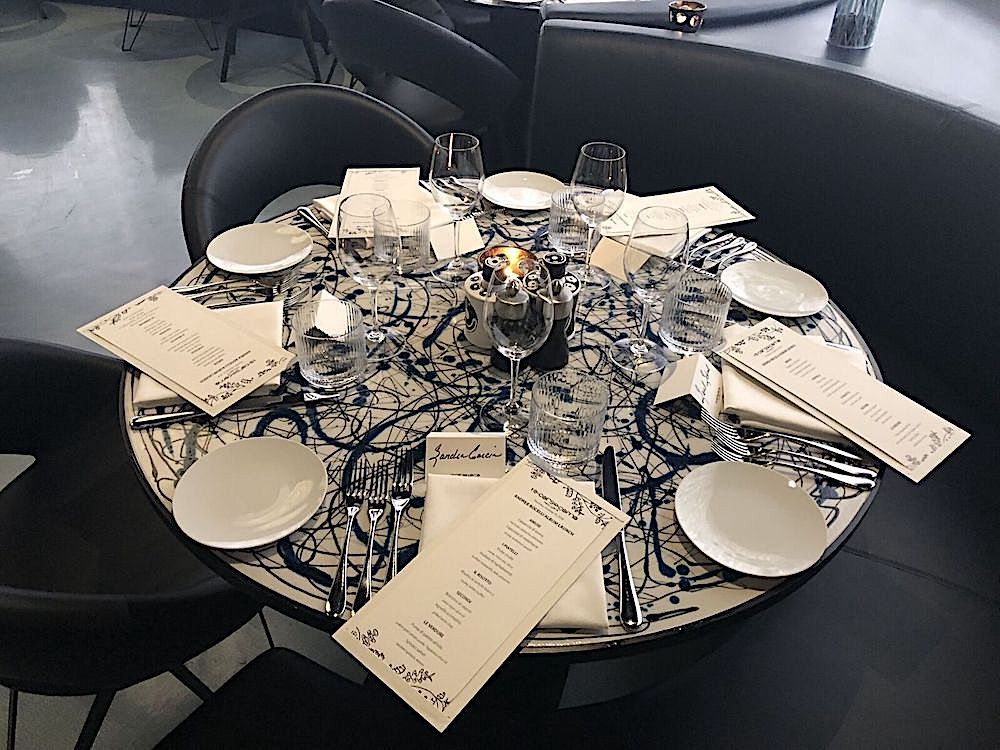
The
restoration of the area once known as the
Fulton Fish Market and the upgrading of the
South Street Seaport has brought
encouraging vitality to a neighborhood that
can now depend on a local clientele
living in the Financial District. So the
implantation of a high-concept Italian
design boutique and restaurant makes good
sense. Opened only two months
now, the restaurant buzzes after six
p.m. with a
bar crowd while the
dining room is building a reputation as a
place to eat fine Italian food.
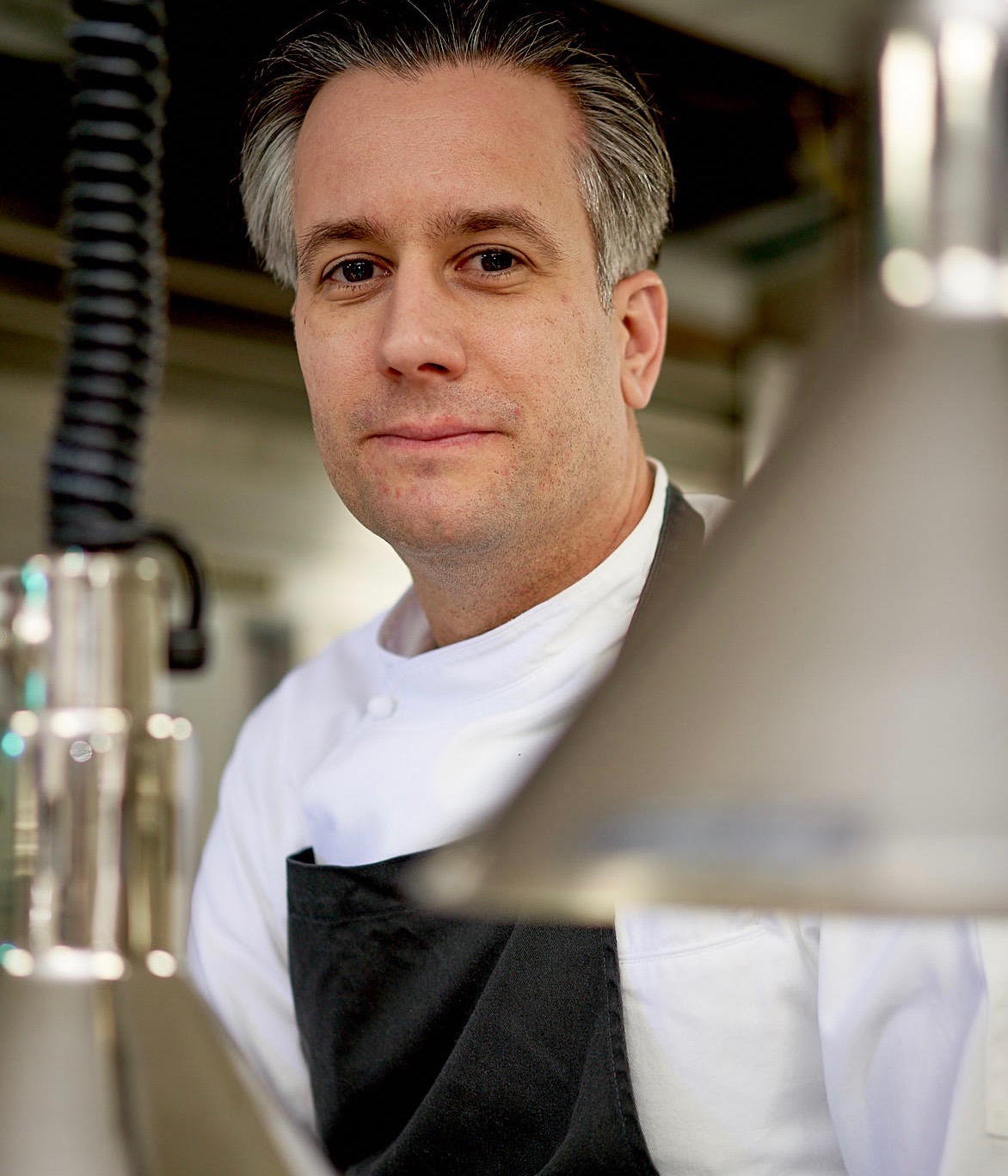 The 10 Corso Como
brand began in 1990, when
Carla Sozzani, "a former fashion editor and
publisher," opened a gallery in
Milan. From there it has expanded globally to
Seoul, Beijing, Shanghai and two
in Tokyo. Usually such endeavors end up being
cookie-cutter copies of one
another, and all the 10CC designs are fairly
minimalist, in black and white,
with Op Art-style circle figures to fit with the
Monaco font used throughout
the graphics.
The 10 Corso Como
brand began in 1990, when
Carla Sozzani, "a former fashion editor and
publisher," opened a gallery in
Milan. From there it has expanded globally to
Seoul, Beijing, Shanghai and two
in Tokyo. Usually such endeavors end up being
cookie-cutter copies of one
another, and all the 10CC designs are fairly
minimalist, in black and white,
with Op Art-style circle figures to fit with the
Monaco font used throughout
the graphics.
The New York operation, with
its own large
design shop, echoes these motifs in the
restaurant, with tables evoking Jackson
Pollock’s drip paintings, chrome overhead lamps,
and circular booths in dark
gray. The bar looks like the inside of the
flying saucer in The Day the
Earth Stood Still, 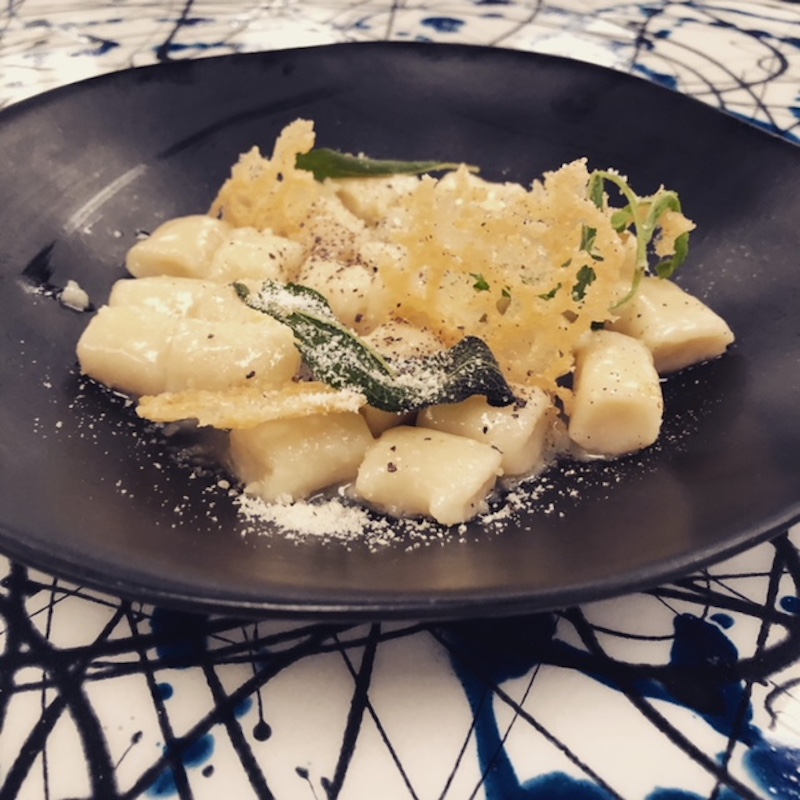 only much
louder.
only much
louder.
All
of this worried me that I was in for
similar carry-over glitz out of the kitchen, but
10CC is in very good hands via
chef Jordan Frosolone (left), whose résumé included
Blackbird and NoMi in Chicago,
with foreign experience in Spoleto and Florence.
In New York he’s worked at Hearth as
chef de cuisine, then at August as executive
chef and director of operations as
part of David Chang’s Momofuku group.
So he’s got a lot of wide-ranging
experience that pans out well on
10CC’s Italian menu.
There is a section for small
plates (I
piatelli) that are perfect after
touring and shopping in the
neighborhood, including first-rate, creamy vitello
tonnato ($16), thinly sliced veal with
tuna cream and capers, and a fine tortino
of eggplant, parmigiano and
mozzarella ($14).
Frosolone fries
his fritto
misto of seafood ($18) to
an impeccable crispness.
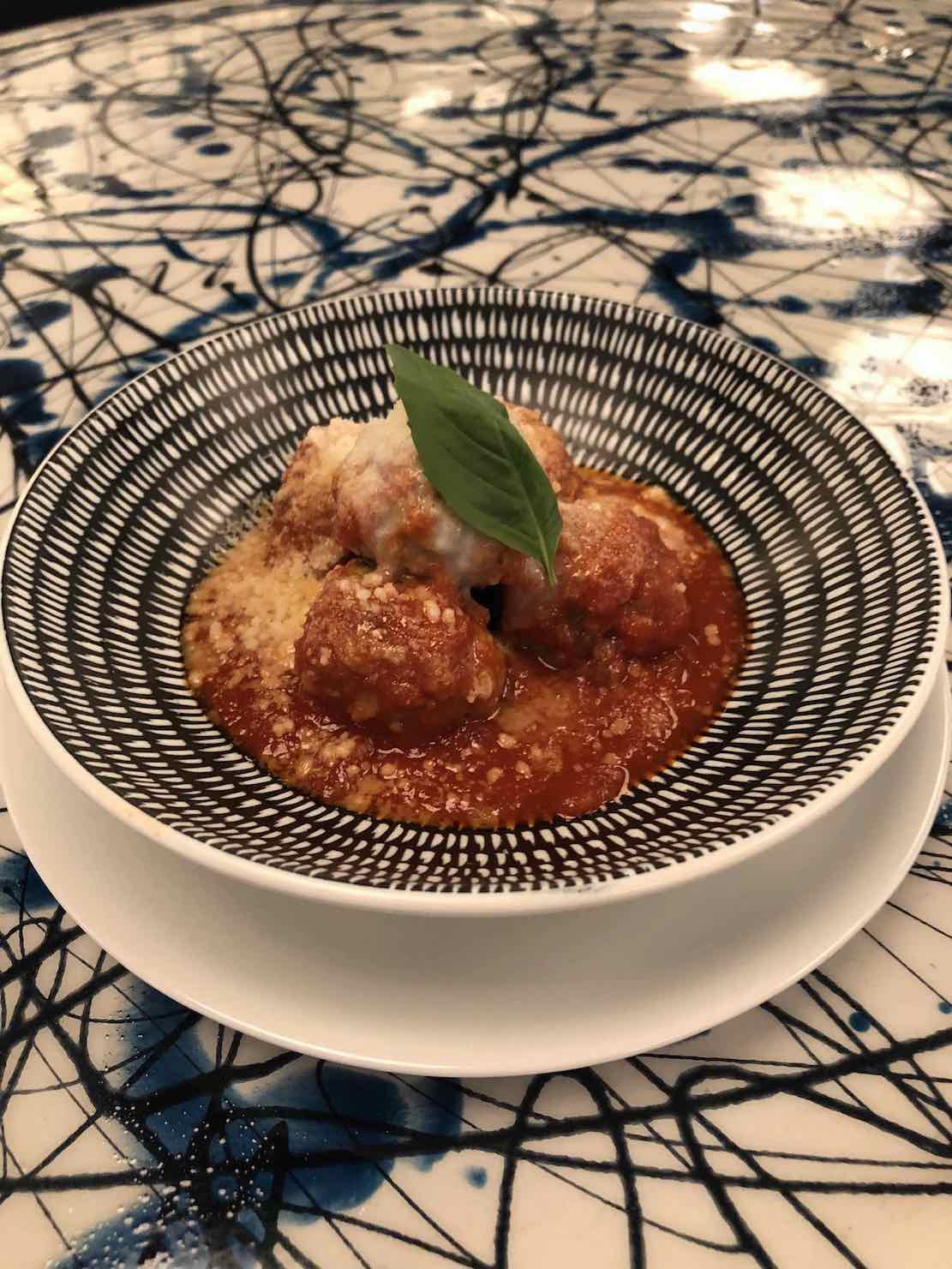 Every pasta of several
we sampled was
impressive for its authenticity, especially in
the ideal texture for each shape
and sauce. Gnocchi
(above)
with butter and sage ($16) had real potato
flavor, while
ravioli stuffed with spinach and ricotta in a
rich bolognese sauce ($18) was
immensely satisfying. Panzerotti
di
funghi ($18), which means “fat bellies,”
of pasta stuffed with mushrooms
was doubly delicious for including chestnuts and
creamy mascarpone. Bigoli,
a fat tubular type of spaghetti,
had a true Roman dressing of cacio e
pepe
(pecorino romano and black pepper) so simple
that its split-second cooking
time was evident ($18). These are very fair
prices, by the way. There are also three
risottos, and
right now for the season the one to have is with
autumn squash and mascarpone
($19). If
you insist on the
extravagance of white truffles, the $65 price
tag isn’t too bad compared with
the $100+ tariffs elsewhere around town.
Every pasta of several
we sampled was
impressive for its authenticity, especially in
the ideal texture for each shape
and sauce. Gnocchi
(above)
with butter and sage ($16) had real potato
flavor, while
ravioli stuffed with spinach and ricotta in a
rich bolognese sauce ($18) was
immensely satisfying. Panzerotti
di
funghi ($18), which means “fat bellies,”
of pasta stuffed with mushrooms
was doubly delicious for including chestnuts and
creamy mascarpone. Bigoli,
a fat tubular type of spaghetti,
had a true Roman dressing of cacio e
pepe
(pecorino romano and black pepper) so simple
that its split-second cooking
time was evident ($18). These are very fair
prices, by the way. There are also three
risottos, and
right now for the season the one to have is with
autumn squash and mascarpone
($19). If
you insist on the
extravagance of white truffles, the $65 price
tag isn’t too bad compared with
the $100+ tariffs elsewhere around town.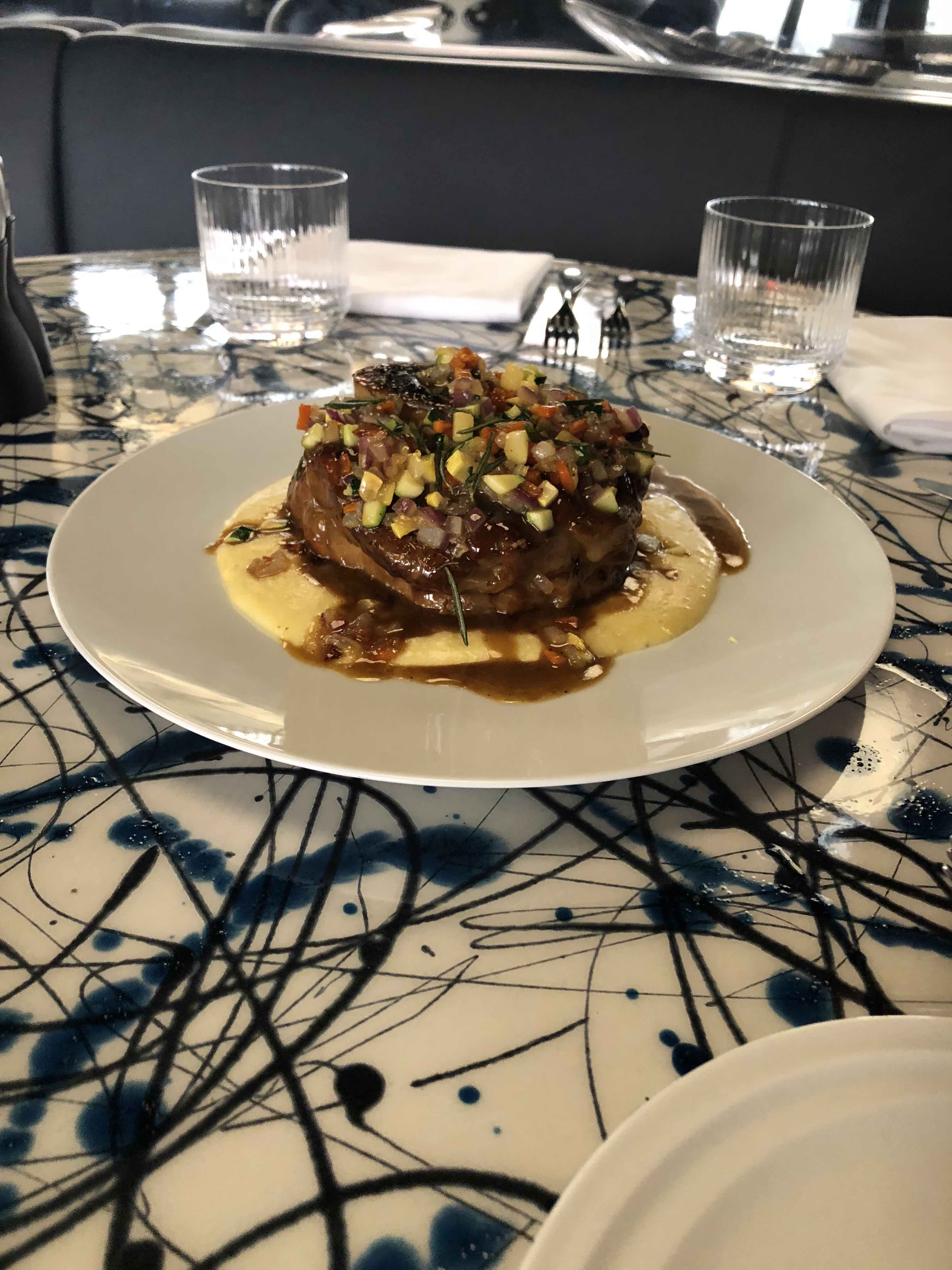
Meatballs,
without spaghetti (left) are a good, hearty
appetizer for two or more people. The osso
buco (right)
of braised veal shank with polenta and vegetable
gremolata ($40) is particularly
pleasing during
this cold weather, as are the lamb
chops “scottaditto”
($23)—“finger
burners” you pick up by the bone. A grilled branzino
($32) that night was the only disappointment
among so many ravishingly good
dishes.
There’s little originality in
the desserts, but
you won’t be disappointed with the panna
cotta with toffee sauce, the
lemon semifreddo
or the tiramisù
(each $10).
The spirits list is
exceptionally deep, as are
the reds on the wine list, with all the big
names like Solaia and Tignanello
along with some smaller wineries, most at
reasonable prices.
Seen
from the outside, 10CC’s over-the-top
design elements might make you think it’s not a
serious Italian ristorante. Get
past the bar and I think you’ll be amazed.
(Incidentally, good luck
trying to navigate the
hopeless website for basic information.)
❖❖❖
By John Mariani
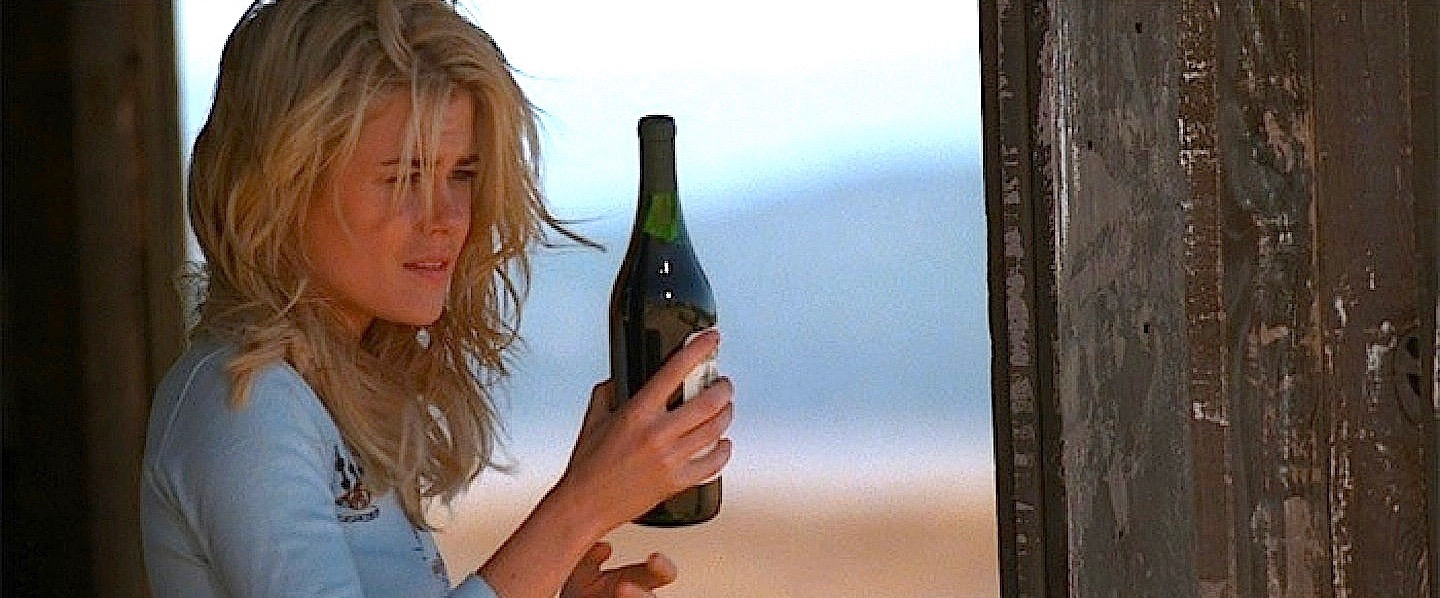
Rachael Taylor in "Bottle Shock" (2008)
Among my favorite wines of 2018 I
count those
that gave me the most pleasure and
satisfaction or enlightened me about regions
or varietals I either thought I knew or
didn’t know much about at all. Some of
these included wines that were remarkably
well priced for such high
quality.
Indeed, there doesn’t
seem to be any reason to gloat about old
vintages of rare wines, many no longer
available, costing hundreds of dollars.
(All the following should be able to be found at any of the various Internet wine sites like wines-searcher.com.)
CHARLES HEIDSIECK ROSÉ RÉSERVE ($70)—My
affection for rosé Champagnes grows whenever I
drink a new favorite, in this
case one in which 80% of the wines of the
harvest are blended with
one-third of each varietal used—Chardonnay,
Pinot Noir and Pinot Meunier—while
20% of reserve wines from other years—seven or
eight years old—are blended in
equal proportions of Chardonnay and Pinot
Noir. Then, they add 5% red wine to
give more tannin to the blend. It is then
matured for three years. The result
is a very complex rosé with just the right
body, effervescence and fruit to
distinguish it from simple rosé blends.
CHÂTEAU D’YQUEM 2005 ($250)—At a gala dinner in Bordeaux, this was the best wine of an evening mostly devoted to reds from the Médoc. A dessert of mascarpone with a confit of apricots and scented with verveine was accompanied by a Château d’Yquem 2005 Sauternes, as perfect as any wine I’ve ever had. The distinguishing mark of Yquem has always been the backbone of botrytis and oak behind the intensity of sweetness from a blend of 80% Semillon and 20% Sauvignon Blanc. It proved again why it is considered one of the greatest wines in the world.
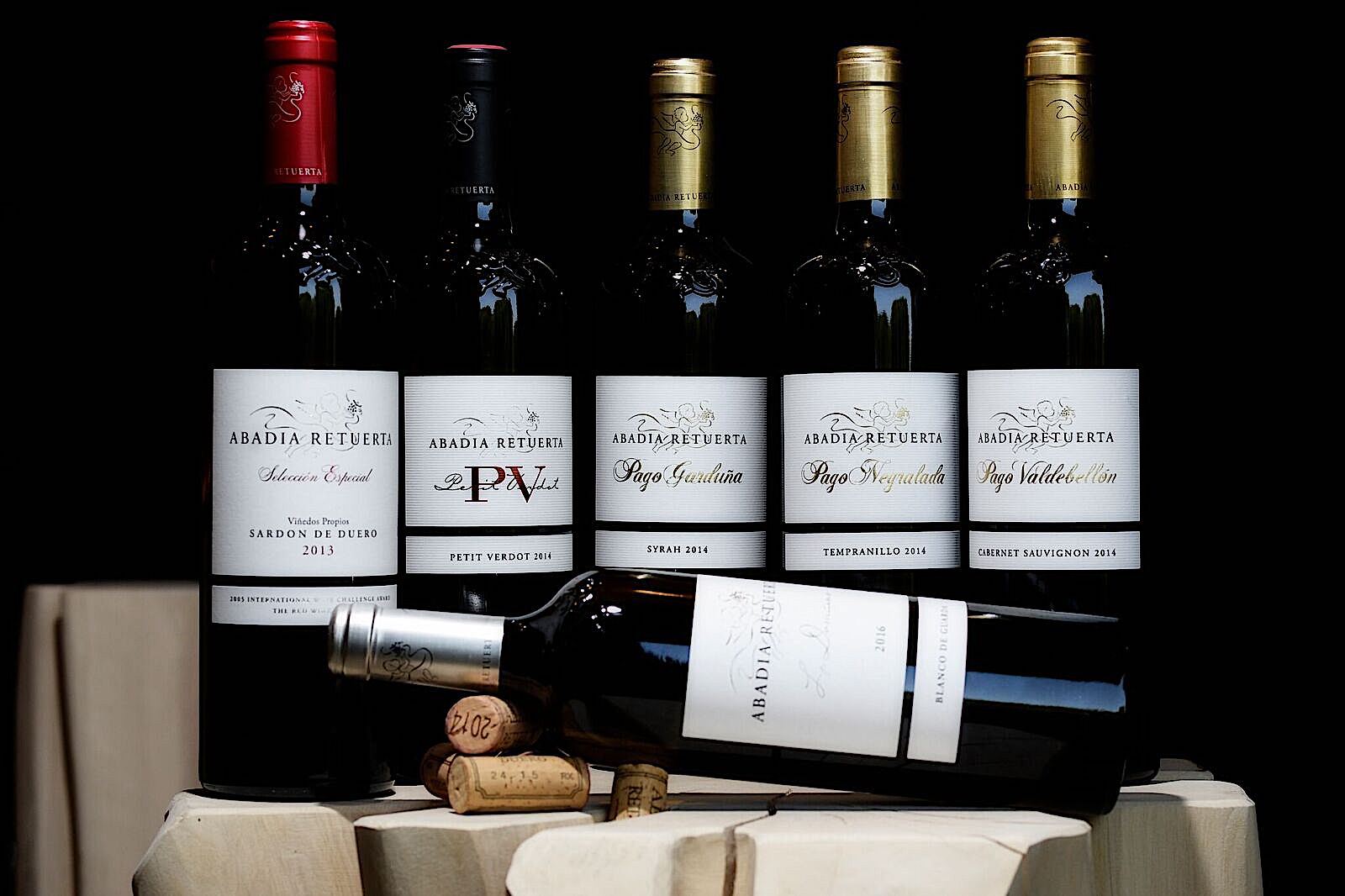
ABADIA RETUERTA Selección Especial 2014
($26) —Over a dinner of Italian pastas, I
tasted the current Selección Especial
of this great Spanish estate from a 2014
vintage (bottles
dating back to the first vintages of the
late 1990s
are still available for sale) and found
it a remarkable wine with Bordeaux levels of
flavor, soft tannins and, even so
young, very pleasing to drink and only likely
to get better over the next five
years. At about $26 to $30 a bottle, it is
justly a contender against the rest
of the best Spain has to offer right now.
CANTINE MENHIR SALENTO
PIETRA PRIMITIVO SUSUMANIELLO ($23)—Vintner Gaetano
Marangelli's flagship wine, with
only
15,000 bottles produced, is the Pietra
Primitivo Susumaniello , which I would rank with many of the
finest
red wines in Italy. If there were such a class
as “Super Puglians,” this would
be one of them. In this case, only the
Primitivo is aged and only for six
months in barrique. The Susumaniello does not
spend time in oak at all and is
only added to the final blend before bottling
and aging four months.
It is a very voluptuous wine, and that crucial
acidity balances the richness of
the tannins and the exuberance of the ripe
fruit. By not allowing it to age in
oak for an extended period, the wine maintains
an elegance it might otherwise
lose. At 14%, it has an ideal level
of alcohol.
JOEL GOTT PINOT NOIR 2016 ($18)—
Joel Gott has a catholic approach to making
wines through blending of grapes
from California, Oregon and Washington, though
largely from Santa Barbara,
which enjoys cooling breezes from the Gabilan
Range and Santa Lucia
Mountains. This
means you’re not getting one of those hot,
high alcohol western Pinot Noirs;
instead the acidity keeps it of light to
medium body with nice cherry flavors,
at a fine 13.9% alcohol. Being aged mostly in
stainless steel helps maintain
its freshness before going into new and 2- to
3-year-old French oak barrels to
tamp down the tannins.
MATANZAS CREEK WINERY SAUVIGNON
BLANC
2016 ($15)—Matanzas Creek in
Santa
Rosa has been making wine on what  was once a dairy
farm since 1997 (now under
the Jackson Family group), and since 2010
winemaker Marcia Torres Forno has
transformed the estate’s production of
Sauvignon Blanc
through new
plantings and harvesting techniques.
They now make
five different bottlings from the
varietal—highly unusual for a California
winery—and
the result is wines that are creamier and
more refreshing without the cloying
punch-like flavors of so many
others. I love this with grilled
chicken or seafood during the summer, and it’s
excellent paired with
cheeses.
was once a dairy
farm since 1997 (now under
the Jackson Family group), and since 2010
winemaker Marcia Torres Forno has
transformed the estate’s production of
Sauvignon Blanc
through new
plantings and harvesting techniques.
They now make
five different bottlings from the
varietal—highly unusual for a California
winery—and
the result is wines that are creamier and
more refreshing without the cloying
punch-like flavors of so many
others. I love this with grilled
chicken or seafood during the summer, and it’s
excellent paired with
cheeses.
SummuS 2014 ($80)—Made
from grapes in the southern part of
Montalcino, where stony, calcium-rich soil
gives the wine its abundant mineral qualities,
this is a mix of Cabernet
Sauvignon (35%), Syrah (25%) and Sangiovese
(40%)—the blend differs in
percentage each year—which are first vinified
separately, then transferred to
French oak barriques, also separately, for
12-14 months. Only then are they
blended and stored away for another 10-12
months and, finally, six months of
bottle age. The result is a wine that
explains its name—“the greatest”—within
the Banfi constellation, for it is indeed a
very complex wine. This
one I really do want to keep in my cellar for
another two or three years before
it reveals all of its finesse, its tannins
soften and the fruit and acid come into
ideal balance.
ÉMILE BEYER PINOT GRIS
TRADITION 2016 ($18)—As
one of Alsace’s premier estates, dating back
to the 16th century in Eguisheim,
Émile Beyer has 42 acres of vineyards,
one-third classified as Grand Cru. This
is a Pinot Gris with good body, a pleasing
13.5% alcohol, and a decided
sweetness of style with none of the acrid
notes of so many Italian Pinot
Grigios. It’s made to chill well and be served
with melon and ham or with
cheeses and fruit.
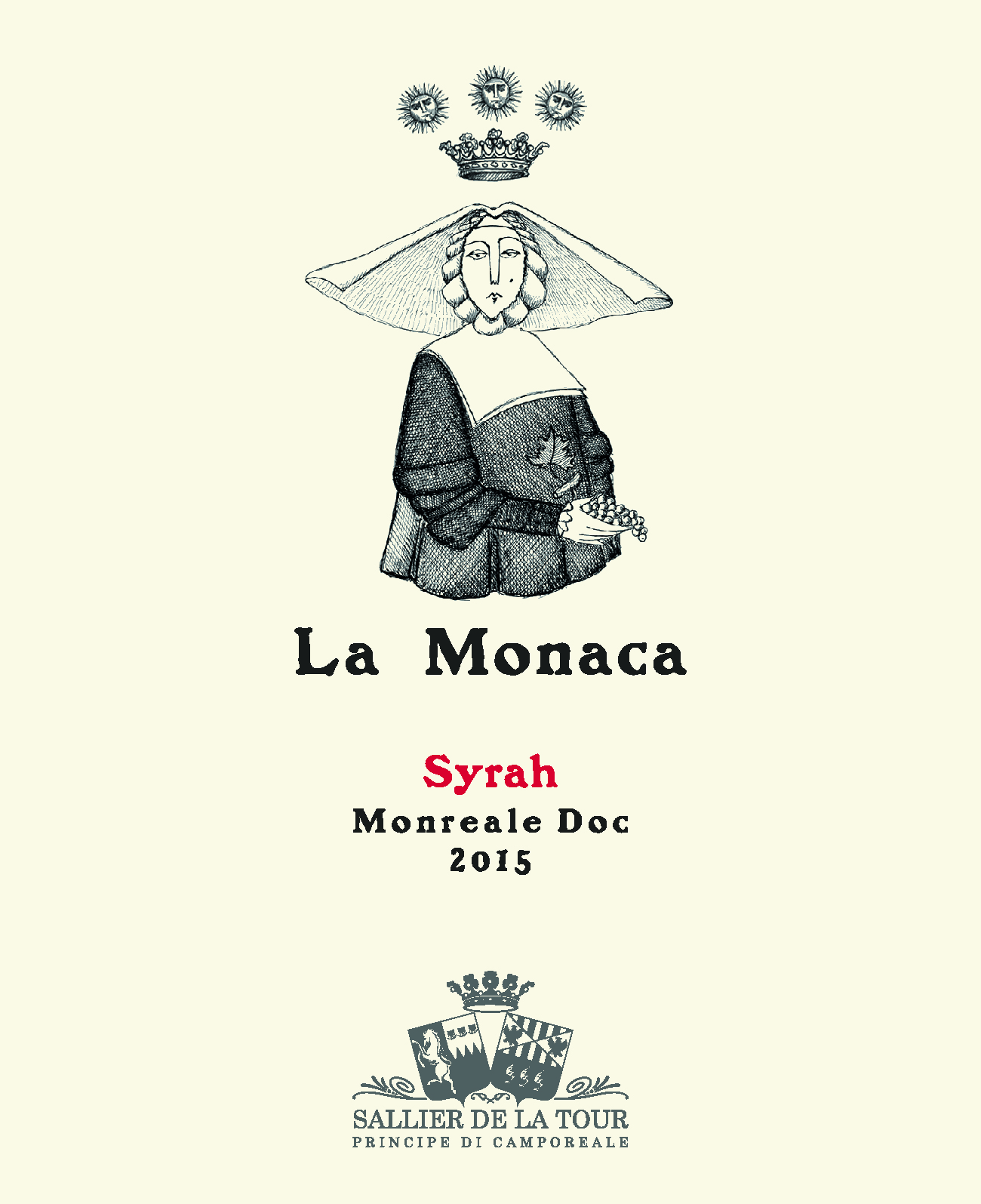 SALUTA
SALLIER DE LA TOUR LA MONACA
2015 ($40)—Sallier’s La Monaca, a
100%
Syrah from the 2015 vintage, is their flagship
wine with a production of only
9,000 bottles. It has a huge nose,
as one expects from Syrah, and a
fleshy body with a bracing edge and a long,
herbal finish. The name comes from
the historical winery where it was first
planted in 1993, so now, 25 years
later, the vines have achieved a maturity that
results in
complexity. At 14.5% alcohol, it is
a mouthful, but there is great
elegance about it that will age well in the
next five years.
SALUTA
SALLIER DE LA TOUR LA MONACA
2015 ($40)—Sallier’s La Monaca, a
100%
Syrah from the 2015 vintage, is their flagship
wine with a production of only
9,000 bottles. It has a huge nose,
as one expects from Syrah, and a
fleshy body with a bracing edge and a long,
herbal finish. The name comes from
the historical winery where it was first
planted in 1993, so now, 25 years
later, the vines have achieved a maturity that
results in
complexity. At 14.5% alcohol, it is
a mouthful, but there is great
elegance about it that will age well in the
next five years.
FÓRRA
MANZONE ALOIS LAGEDER BIANCO
($30)—Alois Lageder is one of the very best
winemakers in Europe, his estate
founded in 1823 and still in the family, with
biodynamic grapes from their own
well-tended Dolomites vineyards as well as
long contracted cooperatives.  Though
located in northern Italy, they speak German
at the estate and the wine’s back
label is in that language. The “IGT” means it
is a wine made according to the
Lageder blend, not in accordance with the DOC
regulations, and you won’t find
the grapes listed. "Fórra" means “narrow
valley" and refers to a
canyon in Adige. Made from a cross between
Riesling and Pinot Bianco, the Manzoni Bianco
grape was created in 1937 and is not widely
planted. It has a
good deal of weight at only 13% alcohol and a
delectable aroma.
Though
located in northern Italy, they speak German
at the estate and the wine’s back
label is in that language. The “IGT” means it
is a wine made according to the
Lageder blend, not in accordance with the DOC
regulations, and you won’t find
the grapes listed. "Fórra" means “narrow
valley" and refers to a
canyon in Adige. Made from a cross between
Riesling and Pinot Bianco, the Manzoni Bianco
grape was created in 1937 and is not widely
planted. It has a
good deal of weight at only 13% alcohol and a
delectable aroma.
BARON DE BRANE 2010 ($27)—Very
rich, very supple, very layered, showing its
Margaux appellation beautifully.
The blend is 53% Cabernet Sauvignon and 47%
Merlot, with no Cabernet Franc. The
vintage was a dry year with cool summer nights
that helped build up the aroma
and phenolics. This is the second wine of
Château Brane-Cantenac, a renowned
second growth, overseen by Henri Lurton, and a
very good price for a Bordeaux
of this quality. It’s ready to drink right
now.
MARQUÉS DE RISCAL
RESERVA 2012 ($13)--An amazing
bargain for a rich Spanish wine from one of
its most highly regarded producers. A blend of
Tempranillo whose grapes date by to 1970s
vineyards, Graciano and Mazuelo, the reserva
spend about two years in American oak, which
makes this one of the benchmarks for a Rioja
style followed throughout the region.
 THE DINNER FOR KING LOUIS XVI
THE DINNER FOR KING LOUIS XVI 
WAS
DEFINITELY THE HOT TICKET
Presented by Chim Pom, a Japanese art collective,
Ningen Restaurant featured two weeks' of meals
commemorating meals served to death row inmates
before their execution, including that of John Wayne Gacy (right), the
party clown for hire and a serial killer who
killed at least 33 boys and young men in the
Chicago area then stuffed them in the crawl
space of his home. Known as the "Killer Clown," he
also managed KFC chains, and his request for his
final meal was for fried shrimp, a bucket of
original recipe KFC, french fries, and a pound of
strawberries.

PLENTY OF GOOD REASONS
TO WANT TO RUSH RIGHT OVER
“Bonus tip: Virtually all seats, whether reserved or for
walk-ins, are backless stools. Also consider calling
ahead if you plan on dining as a walk-in to gauge the
wait, though be warned that phone calls are not always
answered.”— Ryan Sutton, “Saint Julivert,"Eater.com (11/28/18)
❖❖❖
Wine
Column Sponsored by Banfi Vintners
SANGIOVESE
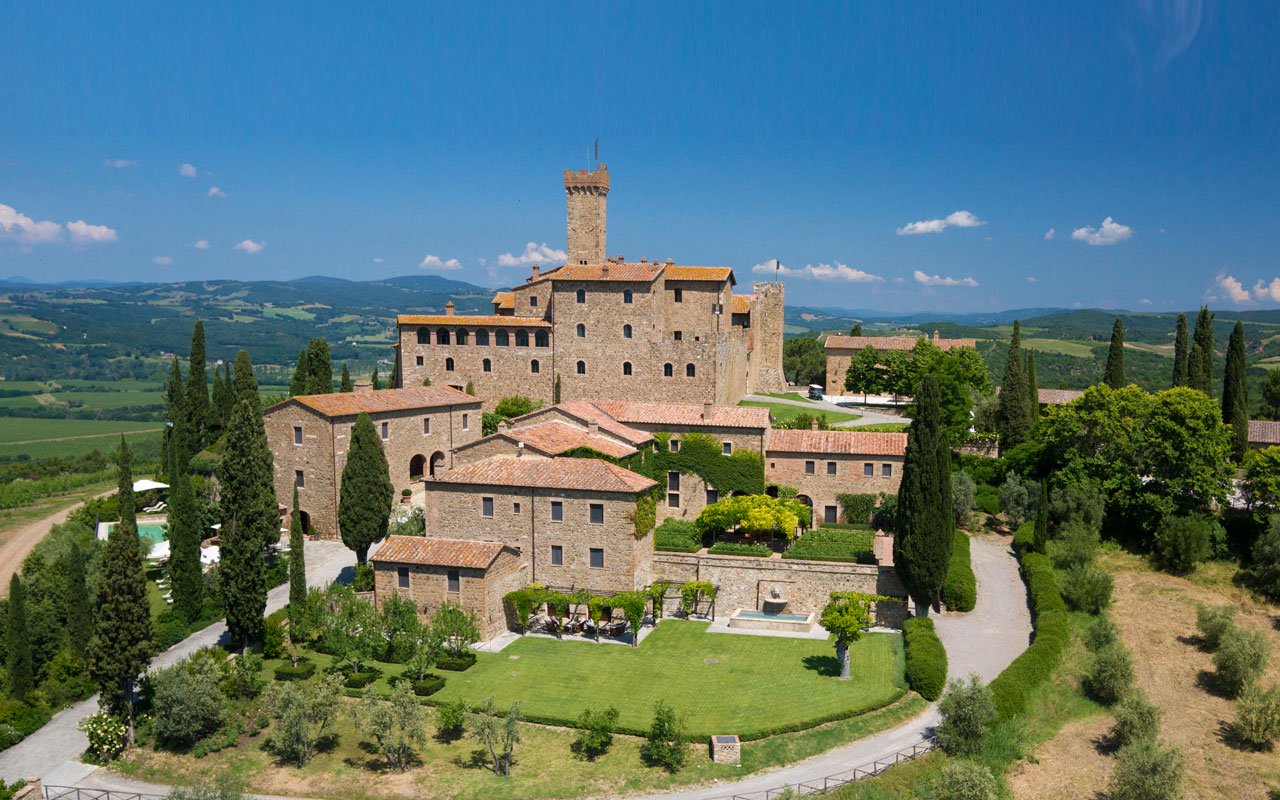 Wine is a joy year-round but
in cooler weather one
grape varietal has really taken center stage in
my daily activities – that most Italian of
grapes, Sangiovese, and its ultimate expression
– Brunello di Montalcino.
Wine is a joy year-round but
in cooler weather one
grape varietal has really taken center stage in
my daily activities – that most Italian of
grapes, Sangiovese, and its ultimate expression
– Brunello di Montalcino.
From mid-September through mid-October,
the Sangiovese grown for our various styles of red
wines are be harvested, culminating with the top
selection for Brunello di Montalcino.
Second, cooler weather here means
it is time to start enjoying more red wines and
especially Sangiovese based wines. That
includes Banfi’s cru of Brunello, Poggio alle Mura,
literally the cream of the crop of our Sangiovese
vineyards. Alongside our Poggio alle Mura Brunello di
Montalcino, this year we introduced two more wines
from the cru Poggio alle Mura – a Rosso di Montalcino
and a Riserva of Brunello. Rosso is sort of like the
younger brother of Brunello, also made from 100%
Sangiovese grapes but usually a selection from younger
vines and the wine is aged only two years compared to
the four required for Brunello. The
Riserva, on the other hand, is an even more selective
harvest of Sangiovese, and ages for an additional year
before release.
What is so special about this cru
Poggio alle Mura?
Well, it is the result our over 30 years of
ongoing research at my family’s vineyard estate,
Castello Banfi.
When we first began planting our vines there in
the late 1970s studies from the University of Bordeaux
indicated which strains of many varietals we should
plant, based on the soil type and microclimate of each
vineyard. But
when it came to the region’s native Sangiovese, there
was only local lore, no scientific research. So we took
it upon ourselves to figure out this vine, and set off
on three decades of incredibly detailed research.
We started
with 600 apparent variations on Sangiovese, because it
is so susceptible to variations in weather and soil,
and narrowed that down to 160 truly genetically
different clones.
We planted a vineyard with two rows of each
type, made wine from each of them, and charted the
differences – remember, you only get one chance a year
to make wine, so this took time.
It took about ten years to get some
concrete results, though we continue to experiment
today and always will – you never stop learning in
science and nature!
Once we determined which were the best,
complementary clones that could be planted together to
make the best Brunello, we chose to plant them in what
we determined to be the optimal vineyard sites. Coincidentally,
the best soils and climate conditions are in the
slopes surrounding the medieval fortress today known
as Castello Banfi, known since Etruscan times as
Poggio alle Mura – the walled hilltop. Hence the
name of our most special “cru” of Brunello,
representing a synthesis between tradition and
innovation.
Though the focus of this study was
our Brunello, all of our Sangiovese-based wines,
including the super Tuscans SummuS, Cum Laude, and
Centine, benefitted from this work. And that’s
the third reason for celebrating Sangiovese this
month, for the range of wonderful reds that usher us
into autumn! One
wine in particular was inspired by our research – the
BelnerO, a Sangiovese dominant blend with what I like
to call a kiss of Cabernet and a whisper of Merlot. We grow the
grapes a little differently for BelnerO than for
Brunello, make the wine with less oak aging and
released it earlier from the winery, providing a
counterpoint to Brunello and a lovely terroir-driven
wine in its own right.
If you
know Italians, you know that by nature we are
multi-faceted, varying in mood, and always passionate. As a
nation, we span from the hot sunny beaches of Sicily
near the African coast to the rugged mountains and
Alpine ski slopes of Trentino-Alto Adige in the north. Sangiovese
is grown in almost all of Italy’s regions and reflects
the unique nature of each; it is most famous
(rightfully so) in Tuscany, yet even there it reflects
the nuances of each hilltop, valley and subzone. It has
something a little different to say in Brunello than
Chianti, Morellino than Vino Nobile di Montepulciano,
Rosso di Montalcino than Super Tuscan blends.
Here is a smattering of
Sangiovese-based wines that you may wish to get to
know better, reflecting a spectrum that appeals to
every occasion, every taste, and every budget. We can
assure you that the conversation will never become
boring. 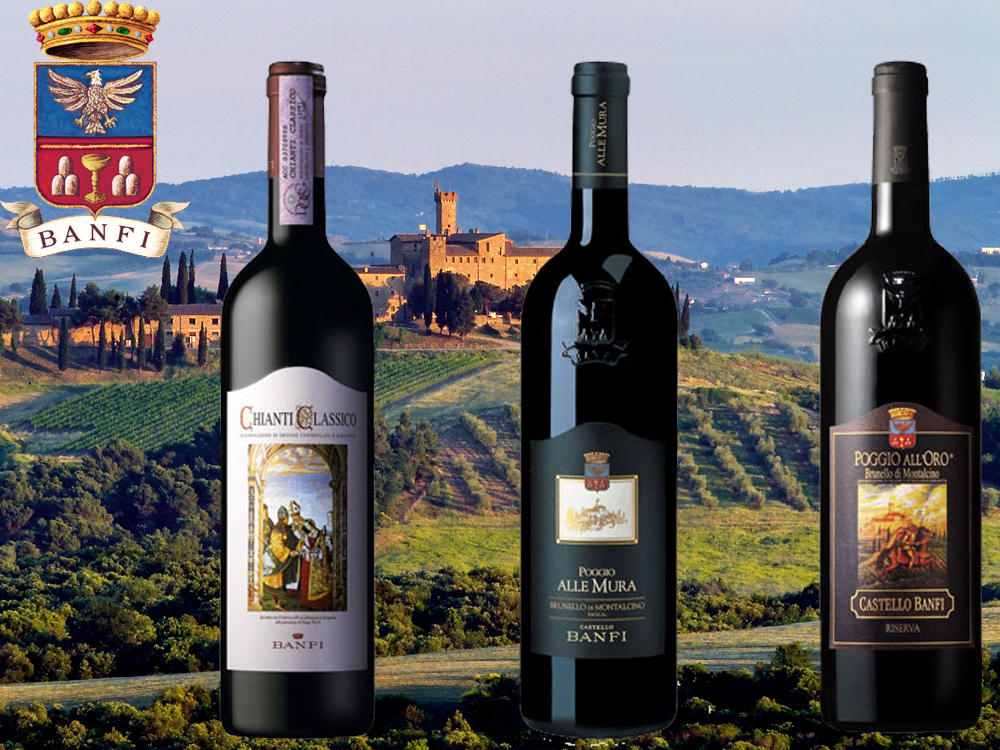
Recommendations for Celebrating
Sangiovese
BelnerO Proprietor’s Reserve Sangiovese
– A refined
cuvée of noble red grapes perfected by our pioneering
clonal research. This dark beauty, BelnerO, is
produced at our innovative winery, chosen 11
consecutive years as Italy’s Premier Vineyard Estate.
Fermented in our patented temperature controlled
French oak and aged approximately 2 additional years.
Unfiltered, and Nitrogen bottled to minimize sulfites.
Castello Banfi Brunello di Montalcino –
Rich, round, velvety and intensely
aromatic, with flavor hints of licorice, cherry, and
spices. Brunello di Montalcino possesses an intense
ruby-red color, and a depth, complexity and opulence
that is softened by an elegant, lingering aftertaste.
Unfiltered after 1998 vintage.
Castello Banfi Rosso di Montalcino – Brunello's "younger brother," produced
from select Sangiovese grapes and aged in barrique for
10 to 12 months. Deep ruby-red, elegant, vibrant,
well-balanced and stylish with a dry velvety
finish.
Poggio all’Oro Brunello di Montalcino
Riserva – A single vineyard selection of our most
historically outstanding Sangiovese, aged five years
before release, the additional year more than that
required of Brunello including 6 months in barrel and
6 months more in bottle to grant its “Riserva”
designation. Incredible
elegance and harmony. Intense with lots of fruit and
subtle wood influence. Round, complete, well balanced
with hints of chocolate and berries. Unfiltered after
1998.
Poggio alle Mura – The first tangible result of years of
intensive clonal research on Montalcino’s native
Sangiovese grape.
Estate bottled from the splendidly sun drenched
vineyards surrounding the medieval Castello from which
it takes its name.
The Brunello
di Montalcino is seductive, silky and smoky. Deep ruby
in color with an expressive bouquet of violets, fruits
and berries as well as cigar box, cedar and exotic
spices. The Rosso
di Montalcino is also intense ruby red. The bouquet
is fresh and fruity with typical varietal notes of
cherry and blackberry, enriched by more complex hints
of licorice, tobacco and hazelnut. It is full
bodied, yet with a soft structure, and a surprisingly
long finish. The Poggio alle Mura Brunello di Montalcino
Riserva is deep ruby red with garnet
reflections and a rich, ample bouquet that hints of
prune jam, coffee, cacao and a light balsamic note. It is full
and powerful, with ripe and gentle tannins that make
it velvety and harmonious; this wine is supported by a
pleasing minerality that to me speaks soundly of that
special hillside in southern Montalcino.
SummuS – A wine of towering elegance, SummuS is an
extraordinary blend of Sangiovese which contributes
body; Cabernet Sauvignon for fruit and structure; and
Syrah for elegance, character and a fruity bouquet. An elegant,
complex and harmonious red wine.
Cum Laude – A complex and elegant red which graduated
“With Honors,” characterized by aromas of juicy
berries and fresh spices.
Centine – A Cuvee that is more than half
Sangiovese, the balanced consisting of equal parts of
Cabernet Sauvignon and Merlot. Vinified in
a firm, round style that easily accompanies a wide
range of dishes, this is a smooth and fragrantly
satisfying wine with international character, and a
perennial favorite at my own dinner table.
Banfi Chianti Superiore – The “Superiore” designation signifies
stricter government regulations regarding production
and aging requirements, as compared to regular
Chianti. An
intense ruby red wine with fruit forward aromas and
floral notes. This
is a round wine with well-balanced acidity and fruit.
Banfi Chianti Classico – An enduring classic: alluring
bouquet of black fruit and violets; rich flavors of
cherry and leather; supple tannins and good acidity
for dining.
Banfi Chianti Classico Riserva – Produced from select grapes grown in the
"Classico" region of Chianti, this dry, fruity and
well-balanced red has a full bouquet reminiscent of
violets.
Fonte alla Selva Chianti Classico – This is our newest entry into the Chianti
arena, coming from a 99 acre estate in Castellina, the
heart of the Chianti Classico region. The wine is
a captivating mauve red that smells of cherry, plum
and blackberry with hints of spice. It is
round, full and balanced with very good
acidity.
Col di Sasso – Sangiovese and Cabernet Sauvignon. Luscious,
complex and soft with persistent notes of fruit and
great Italian style structure.
Any of John Mariani's books below may be ordered from amazon.com.
 The Hound in Heaven
(21st Century Lion Books) is a novella, and
for anyone who loves dogs, Christmas, romance,
inspiration, even the supernatural, I hope you'll find
this to be a treasured favorite. The story
concerns how, after a New England teacher, his wife and
their two daughters adopt a stray puppy found in their
barn in northern Maine, their lives seem full of promise.
But when tragedy strikes, their wonderful dog Lazarus and
the spirit of Christmas are the only things that may bring
his master back from the edge of despair.
The Hound in Heaven
(21st Century Lion Books) is a novella, and
for anyone who loves dogs, Christmas, romance,
inspiration, even the supernatural, I hope you'll find
this to be a treasured favorite. The story
concerns how, after a New England teacher, his wife and
their two daughters adopt a stray puppy found in their
barn in northern Maine, their lives seem full of promise.
But when tragedy strikes, their wonderful dog Lazarus and
the spirit of Christmas are the only things that may bring
his master back from the edge of despair. WATCH THE VIDEO!
“What a huge surprise turn this story took! I was completely stunned! I truly enjoyed this book and its message.” – Actress Ali MacGraw
“He had me at Page One. The amount of heart, human insight, soul searching, and deft literary strength that John Mariani pours into this airtight novella is vertigo-inducing. Perhaps ‘wow’ would be the best comment.” – James Dalessandro, author of Bohemian Heart and 1906.
“John Mariani’s Hound in Heaven starts with a well-painted portrayal of an American family, along with the requisite dog. A surprise event flips the action of the novel and captures us for a voyage leading to a hopeful and heart-warming message. A page turning, one sitting read, it’s the perfect antidote for the winter and promotion of holiday celebration.” – Ann Pearlman, author of The Christmas Cookie Club and A Gift for my Sister.
“John Mariani’s concise, achingly beautiful novella pulls a literary rabbit out of a hat – a mash-up of the cosmic and the intimate, the tragic and the heart-warming – a Christmas tale for all ages, and all faiths. Read it to your children, read it to yourself… but read it. Early and often. Highly recommended.” – Jay Bonansinga, New York Times bestselling author of Pinkerton’s War, The Sinking of The Eastland, and The Walking Dead: The Road To Woodbury.
“Amazing things happen when you open your heart to an animal. The Hound in Heaven delivers a powerful story of healing that is forged in the spiritual relationship between a man and his best friend. The book brings a message of hope that can enrich our images of family, love, and loss.” – Dr. Barbara Royal, author of The Royal Treatment.
 |
The Encyclopedia of American Food and Drink by John F. Mariani (Bloomsbury USA, $35) Modesty forbids me to praise my own new book, but let me proudly say that it is an extensive revision of the 4th edition that appeared more than a decade ago, before locavores, molecular cuisine, modernist cuisine, the Food Network and so much more, now included. Word origins have been completely updated, as have per capita consumption and production stats. Most important, for the first time since publication in the 1980s, the book includes more than 100 biographies of Americans who have changed the way we cook, eat and drink -- from Fannie Farmer and Julia Child to Robert Mondavi and Thomas Keller. "This book is amazing! It has entries for everything from `abalone' to `zwieback,' plus more than 500 recipes for classic American dishes and drinks."--Devra First, The Boston Globe. "Much needed in any kitchen library."--Bon Appetit. |
"Eating Italian will never be the same after reading John Mariani's entertaining and savory gastronomical history of the cuisine of Italy and how it won over appetites worldwide. . . . This book is such a tasteful narrative that it will literally make you hungry for Italian food and arouse your appetite for gastronomical history."--Don Oldenburg, USA Today. "Italian
restaurants--some good, some glitzy--far
outnumber their French rivals. Many of
these establishments are zestfully described
in How Italian Food Conquered the World, an
entertaining and fact-filled chronicle by
food-and-wine correspondent John F.
Mariani."--Aram Bakshian Jr., Wall Street
Journal.
"Equal parts
history, sociology, gastronomy, and just
plain fun, How Italian Food Conquered the
World tells the captivating and delicious
story of the (let's face it) everybody's
favorite cuisine with clarity, verve and
more than one surprise."--Colman Andrews,
editorial director of The Daily
Meal.com. "A fantastic and fascinating
read, covering everything from the influence
of Venice's spice trade to the impact of
Italian immigrants in America and the
evolution of alta cucina. This book will
serve as a terrific resource to anyone
interested in the real story of Italian
food."--Mary Ann Esposito, host of PBS-TV's
Ciao
Italia. "John Mariani has written the
definitive history of how Italians won their
way into our hearts, minds, and
stomachs. It's a story of pleasure over
pomp and taste over technique."--Danny Meyer,
owner of NYC restaurants Union Square
Cafe, The Modern, and Maialino.
|
 |
 |
 |
 |
 |
 |
 |
 |
 Everett Potter's Travel Report:
Everett Potter's Travel Report: 
 Eating Las Vegas
JOHN CURTAS has been covering the Las Vegas
food and restaurant scene since 1995. He is
the co-author of EATING LAS VEGAS – The 50
Essential Restaurants (as well as
the author of the Eating Las Vegas web site: www.eatinglasvegas.
He can also be seen every Friday morning as
the “resident foodie” for Wake Up With the
Wagners on KSNV TV (NBC) Channel 3 in
Las Vegas.
Eating Las Vegas
JOHN CURTAS has been covering the Las Vegas
food and restaurant scene since 1995. He is
the co-author of EATING LAS VEGAS – The 50
Essential Restaurants (as well as
the author of the Eating Las Vegas web site: www.eatinglasvegas.
He can also be seen every Friday morning as
the “resident foodie” for Wake Up With the
Wagners on KSNV TV (NBC) Channel 3 in
Las Vegas.
MARIANI'S VIRTUAL GOURMET
NEWSLETTER is published weekly. Publisher: John Mariani. Editor: Walter Bagley. Contributing Writers: Christopher Mariani,
Robert Mariani, Misha Mariani, John A. Curtas, Gerry Dawes, Geoff Kalish,
and Brian Freedman. Contributing
Photographer: Galina Dargery. Technical
Advisor: Gerry
McLoughlin.
If you wish to subscribe to this
newsletter, please click here: http://www.johnmariani.com/subscribe/index.html
© copyright John Mariani 2019

